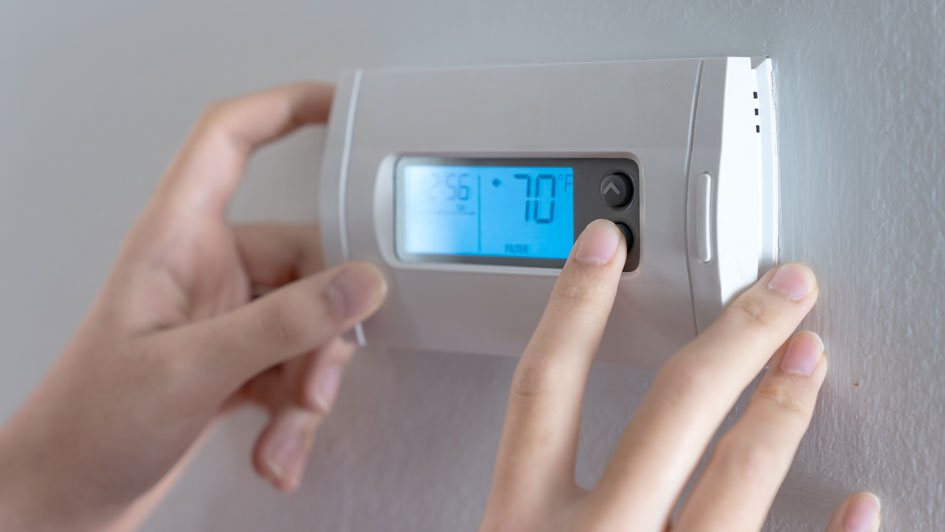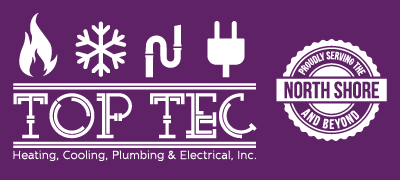
It's always nice when we manage to save money on our utility bills, but it turns out there’s a way to do it when you aren’t even home.
The key is your thermostat. By using automatic schedules, you can help the thermostat plan for your preferred temperatures. That means you can have different temperature settings for when you’re at home, away or even when you’re asleep.
By trying a few of these schedules, you can enjoy comfy temperatures while keeping more money in your pocket. Take a look at a few ways your thermostat can be a source of energy savings:
While at Home
When you’re home, you want comfortable temperatures. It's only natural to want your thermostat lower in the summer while you are in the house to appreciate the cool air.
But in terms of energy efficiency, the best range for the summer is usually between 78 and 80 degrees Fahrenheit. By adjusting things a few degrees, you'll avoid the worst of summer while keeping your energy bill more manageable.
While Gone
When it comes to setting the temperature for when you are out of the house in summer, it's extremely common to move the thermostat higher than you would if you were in the house.
For some homes, you can set the thermostat to temperatures as high as 88 degrees while no one is home before lowering it back to the sweet spot of 78-80 degrees after you return. This way, your air conditioning system isn't working around the clock to cool an empty house.
While Asleep
To enjoy a good night's sleep during the summer, you want a nice cool temperature. A good rule of thumb is between 68-72 degrees Fahrenheit. This will keep you from getting too hot or too cold while you're trying to sleep.
Other Ways to Use Less Energy:
- Put in a smart thermostat: Trying a smart thermostat in the summer can lower energy costs since it can plan your temperature adjustments according to your lifestyle and home environment. They can lower the temperature while you are home or sleeping, before allowing it to get a little warmer when the house is empty. Using reputed brands and models such as the Lennox iComfort, you have the ability to remotely access and change the temperature through your smartphone, tablet or laptop. Requesting smart thermostat installation in your Libertyville home can be the simplest strategy for maintaining comfortable, yet energy-efficient temperatures even when you aren’t home.
- Upgrade your HVAC system: Upgrading your HVAC system is another great option for long-term energy savings. By investing in a more energy-efficient system, you can also count on lower utility bills since more efficient equipment requires less energy to heat and cool your home. Air conditioning installation in Libertyville is a great way to beat the heat in the summer.
- Stay on top of routine AC maintenance: Hiring a skilled professional to perform regular air conditioning maintenance in Libertyville can have a significant impact on your utility bills. With regular cleaning of the coils, checking for damage and clearing air vents of dust and debris, you may notice your HVAC system run more efficiently. Increasing efficiency also limits strain on key parts and lowers operational costs, lowering total energy use and eventually the total monthly bill.
- Replace your air filter regularly: Regularly changing the air filters in your HVAC system saves money by keeping airflow as smooth and consistent as possible. When filters become clogged, your air conditioner will have to work harder, and the strain can reduce the system’s life span and cause breakdowns.
- Check if you have enough insulation in the attic: Insulation is one of the key components in any energy-efficient home, securing the hot air outside and the cool air inside through summer. The North American Insulation Manufacturers Association (NAIMA) recommends that homes in the southern United States should possess at least 13-14 inches of insulation, while states further north need 16-18 inches.
- Check your air ducts: Damage to the ventilation is capable of increasing your energy bills much more than 20 percent, plus it can also lead to problems with your water heater, clothes dryer and other appliances to get into the atmosphere of your home. Checking your ductwork for leaks and sealing them can address both concerns.
- Seal all other leaky spots in your home: Sealing leaky spots in your home with caulk, foam sealant or weather-stripping helps keep things cooler during those hot summer days. You should also check for any gaps around windows, doors and even outdoor fixtures. Making time to seal leaks now can help you save a lot in the long term.
